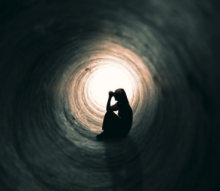What is the Shadow-Self?
The term ‘shadow-self’ was brought to popular awareness by the psychologist C.G. Jung. In essence it can be described as the part of our personality which our conscious ego does not want to identify with.
And this matters to us because as Jung said,
“That which we do not bring to consciousness appears in our lives as fate.”
Some of the formation of the shadow concerns our instinctual animal natures, especially our aggressive and sexual impulses whose full and free expression is inhibited by our need to get along in society. Another significant area of repression concerns traits and impulses, and even needs, which we feel those around us have deemed inappropriate, and have elicited strongly negative reactions, meaning they too will have been stored away from sight. This is a very natural process, which in some way keeps us feeling safe and protected, especially in our early years as we are first finding our way.
Unfortunately, however, this means when we remain unconscious of what we have repressed, i.e. of our shadow, with the right triggers we move into unconsciousness. It is as if we have been taken over by something other than ourselves, potentially causing distress or harm to ourselves and others. Equally we will find we project what we cannot face within ourselves on to the outer world. Sometimes these traits and impulses will actually be

present in other people we encounter, but often there will be distortion where they are not present, or we unconsciously ‘supercharge’ them, so they seem more than they actually are. You could say the shadow-self creates conflict within and is the root of much of the conflict in the outer wider world.
However, very significantly the shadow does not only contain challenging ‘negative’ traits and impulses but also positive creative traits and impulses which for some reason were not allowed expression. For instance, a parent may have had very specific ideas about a child’s future career and harshly diminished everything the child accomplished in another arena of life. So we can safely say the shadow also contains some ‘gold’ to be rediscovered.
The process of reintegration can be a challenging one, but evolutionary astrology can aid this endeavour of gradually returning to wholeness. It is the recognition that none of us is perfect and that we all possess good and bad, and if we can recognise the less favourable traits we possess and learn to express them in safe and constructive ways we grow. Likewise, once seen, we can own and joyfully express the treasure we had unknowingly stowed away.
“One does not become enlightened by imagining figures of light, but by making the darkness conscious.” C.G. Jung
